膝や関節に問題があってもスキーをあきらめる必要はありません。短いスキーのような最新の低負荷スキーギアは、膝や関節への負担を減らしながらスキーの楽しさを保ちます。知っておくべきことはこちらです:
- なぜ普通のスキーは関節に負担がかかるのか:長いスキーはねじれの力を増やし、膝にストレスを与えます。急なターン、モーグル、重い装備は膝の痛みを悪化させたり、ACL断裂のようなケガにつながることがあります。
- 低負荷スキーオプション:Snowfeet Skiskates(44 cm)やSkiblades(65~99 cm)のような短いスキーは、トルクを最小限に抑え、衝撃を吸収し、軽量で関節に優しいです。
-
適切なモデルの選び方:
- 軽度の問題:安定性と負担軽減のための99 cm Skiblades($490)。
- 中程度の問題:簡単なターンとコントロールのための65 cm Skiblades($450)。
- 重度の問題:最大の関節負担軽減と携帯性のための44 cm Skiskates($390)。
- Powder skiing:深雪用の99 cm Snowfeet POWDER。
簡単比較
| 関節問題のレベル | おすすめモデル | 長さ | 価格 | おすすめ対象 |
|---|---|---|---|---|
| 軽度 | Skiblades | 99 cm | $490 | 安定性と負担軽減 |
| 中程度 | Skiblades | 65 cm | $450 | 簡単なターン、ストレス軽減 |
| 重度 | Skiskates | 44 cm | $390 | 最大の関節負担軽減 |
| Powder Skiing | POWDER | 99 cm | $490 | 深雪でのコントロール |
短いスキーに切り替え、スピードよりもコントロールを優先しポールを使うなどの技術調整は、膝を守りつつスキーを楽しむのに役立ちます。滑走前には必ず医師や理学療法士に相談してください。
8つのヒント:怪我(ACL、MCL、LCL、半月板膝の怪我)からのスキー復帰
関節の健康のためのショートスキーの主な利点
関節の健康、特に膝の問題を抱える方にとって、スキー用具のすべてが重要な役割を果たします。Snowfeet*製品は、RossignolやAtomicのような従来のアルペンスキーに比べて、膝への負担が少ない優しい代替品として際立っています。そのデザインは膝への負担を大幅に軽減する重要な利点を提供します。詳しく見ていきましょう。
レバーとトルクの軽減
こういうことです:長いスキーは長いレバーのように作用し、関節にかかる力を増幅させるため、膝により大きな負担をかけます。Northern Michigan Sports Medicine CenterのJeff Samyn, PT, OCS, CSCSが説明するように:
「逆に、短く形状の整ったスキーはテールも短いため、ターンがしやすく膝関節への負担を減らします。」
通常150〜180 cmの従来のスキーはレバレッジが大きくなり、膝への負担が増します。これに対し、Snowfeet* 製品、例えば44 cmのSkiskatesや99 cmのSkibladesはこの機械的負荷を軽減します。短いスキーは小さい回転半径で曲がりやすく、衝撃もよく吸収します。膝の怪我はダウンヒルスキーで最も一般的な怪我であり、他の怪我の3倍も多いため、このレバレッジの軽減は関節の健康にとって大きな勝利です。
軽量で携帯しやすいデザイン
重量は関節の快適さに影響を与えるもう一つの要素です。主要ブランドの従来のスキーはペアで6〜12ポンドの重さがあり、持ち運びや操作時に負担がかかります。一方、Snowfeet* 製品は軽量でコンパクトです。例えば、44 cmのSkiskatesは非常に軽く、バックパックに入るほどで、価格は390ドルです。これは、ゲレンデに出る前から不必要な身体的負担を避けたいスキーヤーにとって理想的な選択肢です。
軽量な装備は、運搬やスキー中の労力を減らし、関節に問題がある人にとっては大きなメリットです。米国では年間約79万件の人工膝関節置換術が行われており、装備の重量を少しでも減らすことが関節の負担軽減に明確な違いをもたらします。
膝への負担を減らす動きやすさ
Snowfeet* 製品のコンパクトなデザインは、荷物を軽くするだけでなく、膝への負担も大幅に軽減します。短いスキーは本質的に操作性が高く、転倒のリスクを下げます。転倒はスキーでの膝の怪我の主な原因なので、より良いコントロールは関節の保護につながります。
この向上した操作性は、ゲレンデでの自信も高めます。Snowfeet* 製品なら、装備と戦っているような感覚なく快適な速度で滑ることができます。従来の長いスキーは低速時に不安定になりがちですが、Snowfeet* モデルは安定性を保ち、コントロールを維持し、膝に負担をかける急な動きを減らします。中程度の関節の問題には65 cmのSkiblades、より深刻な問題には超コンパクトな44 cmのSkiskatesを選べば、これらのデザインは従来のスキーに伴う機械的ストレスを最小限に抑えるように作られています。
あなたのニーズに合ったSnowfeet*モデルの選び方

適切な Snowfeet* モデルの選択は、あなたのスキーのスタイルと関節の状態によります。Snowfeet* は快適さを保ち、身体のニーズに合ったさまざまなモデルを提供しています。どれがあなたに最適かを判断するための内訳はこちらです。
軽度の膝の問題には: Snowfeet* Skiblades(99 cm / 約39インチ)
膝が時々硬く感じたり軽い不快感がある場合、99 cm(約39インチ)のSkibladesは素晴らしい選択肢です。490ドルで、このSkibladesはパフォーマンスと関節の負担軽減のバランスを取っています。長さは安定した乗り心地を提供し、従来のスキーに比べて膝にずっと優しいです。
99 cmのサイズは膝への負担を減らすのに理想的とよく言われます。これらのSkibladesはグルーミングされたトレイルで滑らかで自信のあるターンを可能にする十分な表面積を持ち、小さなターン半径がねじれやトルクを最小限に抑えます。幅広のデザインと柔軟な構造が衝撃を吸収し、膝への衝撃を和らげます。斜面をクルーズする時も多様な地形に挑む時も、これらのSkibladesは関節への負担を軽減します。
中程度の関節問題のために:Snowfeet* Skiblades(65 cm / 約26インチ)
膝の痛みや過去の怪我が気になるスキーヤーには、65 cm(約26インチ)のSkibladesが賢い選択です。450ドルで、この短めのデザインは膝にかかるレバレッジ効果を減らしつつ、多くのスキー条件で十分なコントロールを提供します。
これらのコンパクトなSkibladesはターンが簡単で、少ない努力で関節への負担も軽減します。軽い感触と操作のしやすさにより、機材に苦戦することなく技術の向上に集中できます。膝へのストレスを減らしながら滑らかでコントロールされたスキーを目指すなら、このモデルがぴったりです。
重度の関節問題のために:Snowfeet* Skiskates(44 cm / 約17インチ)
手術を受けた方や重度の膝の問題を抱えている方には、44 cm(約17インチ)のSkiskatesが最適です。390ドルで、この超短いスキーはラインナップで最も関節に優しい選択肢です。設計により膝に負担をかけるレバレッジやトルクを最小限に抑え、より優しい方法でゲレンデを楽しめます。
短い長さのこれらのSkiskatesは、関節に優しく自然で簡単なスケートのような動きを促します。激しいエッジ操作やカービングに頼る必要がなく、体に負担がかかりません。代わりに、自然な動きに沿った滑らかでコントロールされた動きを楽しめます。さらに、軽量で持ち運びも簡単なので、バックパックに入れてすぐに出かけられます!
パウダー愛好者のために:Snowfeet* POWDER(99 cm / 約39インチ)
パウダースキーは関節に問題があると難しいことがありますが、Snowfeet* POWDERモデルは膝に優しく深雪を扱うよう設計されています。490ドルで、このモデルは関節に配慮したデザインとパウダーを楽に滑るための機能を兼ね備えています。
99 cmの長さは深雪での優れた浮力を提供し、幅広のプロファイルによりパウダーの上に留まるために激しい操作に頼る必要がありません。代わりに、オフグルーミングされた地形で滑らかでコントロールされたスキーを楽しめるため、関節を守りたいパウダー愛好者に最適な選択です。
| 関節問題のレベル | おすすめモデル | 長さ | 価格 | おすすめ対象 |
|---|---|---|---|---|
| 軽度 | Skiblades | 99 cm / 約39インチ | $490 | 安定性と関節への負担軽減 |
| 中程度 | Skiblades | 65 cm / 約26インチ | $450 | 膝への負担が少ない簡単なターン |
| 重度 | Skiskates | 44 cm / 約17インチ | $390 | 最大の関節負担軽減と携帯性 |
| Powder Skiing | POWDER | 99 cm / 約39インチ | $490 | 深い雪の上を軽やかに浮かぶ |
Snowfeet* はあらゆる関節の敏感さに対応するオプションを提供し、パフォーマンスと快適さを両立しています。定期的に休憩を取り、技術に注意を払いながら関節に優しいギアを最大限に活用しましょう。膝の問題がある場合は、滑走前に医師や理学療法士に相談することをお勧めします。
sbb-itb-17ade95
関節の健康のためのスキー技術の調整
適切な Snowfeet* ギアを選ぶことは始まりに過ぎません。滑り方も関節の健康に大きく影響します。技術を少し調整するだけで、特に Snowfeet* ギアの設計効果と組み合わせると、膝や他の関節を守るのに大きな効果があります。
スキスケーティングの動きをマスターする
Snowfeet* ギアはスキスケーティングの動きで真価を発揮します。この動きは体への力を分散し、膝への負担を和らげます。肩幅に足を開き、片足を少し前に出し、膝を曲げて衝撃を吸収することから始めましょう。
体重は中心かかかと寄りに保ち、前に倒れすぎないようにしましょう。前傾しすぎると膝に負担がかかります。アイススケートのように横に押し出し、スキーの先端が引っかからないようにして関節への衝撃を減らしましょう。
ターンするときは、Snowfeet* を角度をつけて傾け、行きたい方向に優しく体重をかけましょう。この柔らかく自然な動きは、従来のスキーのような鋭いエッジ操作に比べて膝に優しいです。短い長さのおかげで、Snowfeet* ギアは関節への負担を減らし、各ターンをより滑らかでコントロールしやすくします。
基本的な動きをマスターしたら、スピードの管理とポールの効果的な使い方に注力して、関節をさらに安全に保ちましょう。
スピードよりもコントロールを優先しましょう
確かにスピードはワクワクしますが、関節には必ずしも良いとは限りません。Snowfeet* は特に遅い速度で安定しているため、膝に優しい滑らかでコントロールされたターンに集中しやすくなります。
"Short skis は遅い速度でも安定しており、若い頃ほど積極的に滑りたくない年配のスキーヤーにとって有益です。"
広く大きくカーブするのではなく、より短く正確なターンを心がけましょう。Snowfeet* ギアの小さなターン半径により、これらの素早い調整がずっと簡単で負担も少なくなります。
"短いスキーは操作やコントロールがしやすく、転倒や怪我のリスクを減らすことができます。"
動きを滑らかで流れるように保つことが目標です。急激な動きではなく、この穏やかなアプローチは膝を守るだけでなく、スキーをより楽しくストレスの少ないものにします。
ポールを最大限に活用しよう
ポールは単なるアクセサリーではなく、膝の負担を減らすためのゲームチェンジャーです。膝からの負荷を一部移すことで、関節へのストレスを最大26%軽減できます。
重いハイキングポールではなく、軽量のスキーポールを選びましょう。スキーポールはこの目的のために特別に設計されており、柔軟性があることが多く、転倒時の怪我防止に役立ちます。ポールの長さは前腕が約90度かそれ以上の角度になるように調整しましょう。これにより、肩に過度な負担をかけずに適切なレバレッジが得られます。
ポールを正しく使うことで良い姿勢を保ち、安定性が増します。バランスが良くなると自然と緊張が減り、関節への負担も軽減されます。ポールは一定のリズムを作るのにも役立ち、滑らかで安定した動きを促します。このリズミカルな滑り方は膝を刺激する急な衝撃を最小限に抑えます。さらに、休憩時には信頼できるサポートとなり、脚への負担を軽減します。
Snowfeet* と通常のスキーの比較
Snowfeet* と従来のスキーを、特に関節の快適さの面で比較してみましょう。膝や関節の問題を抱えている方にとって、Snowfeet* と Rossignol、Atomic、または Head のようなブランドのスキーとの違いは、ゲレンデでの楽しさと快適さに大きな差をもたらします。
デザインと影響の主な違い
まずはサイズについて話しましょう。従来のスキーは通常150〜180cmの長さですが、Snowfeet* は44〜120cmのコンパクトな長さを保っています。その小さいサイズは関節への力を減らし、負担を軽減したい人にとっては大きな違いとなります。
重量と携帯性も重要な要素です。従来のスキーは重い専用のスキーブーツと組み合わせるため、持ち運ぶだけでトレーニングのように感じることがあります。一方、Snowfeet* 製品は軽量で、普段使いの冬用やスノーボードブーツと一緒に使えます。これにより、扱う全体の重量が減り、関節への負担が軽減されます。
もう一つの大きな違いは、レバレッジとトルクにあります。従来のスキーの長い長さは、発生するトルクのために関節への負担を増やすことがあります。Snowfeet* の短いデザインはその負担を最小限に抑え、関節に優しい選択肢となっています。
簡単に比較してみましょう:
| 特徴 | 従来のスキー(例:Rossignol、Atomic、Head) | Snowfeet* 製品 |
|---|---|---|
| 長さ | 150–180 cm | 44–120 cm |
| 重量 | 重く、専用のスキーブーツが必要 | 軽量で通常のブーツに対応 |
| 低速時の安定性 | 高速パフォーマンス向けに作られている | 低速時の安定性が良い |
| 操作性 | より多くの力と技術が必要 | コントロールとターンが簡単 |
| 転倒リスク | ミスからの回復が難しい | より許容範囲が広く、回復しやすい |
| 携帯性 | スキーバッグやキャリアが必要 | バックパックに簡単に収まる |
コントロールと操作性に関しては、Snowfeet*が本当に輝きます。従来のスキーはターンをするためにより多くの脚力と正確さを要求し、膝の調子が良くないと難しいことがあります。Snowfeet*のデザインはターンを簡単にし、転倒のリスクを減らすため、怪我の可能性も少なくなります。
それから、衝撃とショック吸収の問題があります。従来のスキーはスピードとカービングのために作られており、衝撃が直接脚に伝わりやすいです。Snowfeet*は、関節に優しい、より滑らかで穏やかな乗り心地を提供することに重点を置いています。
習得の難しさが心配なら朗報です:従来のスキーから短いスキーに切り替えるのは最初は少し違和感があるかもしれませんが、多くの人がSnowfeet*の方が習得しやすいと感じています。身体的負担が少なく直感的で、移行がスムーズです。
最後にブーツの話をしましょう。従来のスキーブーツは硬くて不快なことがあり、関節痛を悪化させることもあります。Snowfeet*は硬いブーツを使わず、通常の冬用やスノーボード用の靴で使えるため、自分のニーズに合ったものを選べる柔軟性があります。
要するに、Snowfeet*は従来のスキーに代わる関節に優しい選択肢を提供し、快適さ、携帯性、使いやすさを兼ね備えつつ、ゲレンデでの楽しさも保ちます。
結論:関節を痛めずにウィンタースポーツを楽しもう
膝の痛みがあってもウィンタースポーツを楽しみたいなら、適切なギア選びが大きな違いを生みます。正しい装備は動きを支えるだけでなく、関節も守ります。
研究によると、短いスキーは膝への負担を減らすのに役立ちます。Snowfeet*製品はコンパクトで軽量なデザインのおかげで優れた選択肢です。44 cmから120 cmの長さで、ねじれ力を最小限に抑え、ターンをよりスムーズで簡単にします。
Snowfeet*の特徴は関節へのストレス軽減に重点を置いていることです。従来のスキーがスピード重視で作られているのに対し、Snowfeet*はコントロール、低速での安定性、衝撃吸収を優先しており、より快適な乗り心地を実現しています。
超コンパクトな44 cmのSkiskatesや99 cmのSkibladesなどの選択肢があり、Snowfeet*は最大限の関節の負担軽減を求める方から、少しのサポートが欲しい方までニーズに合わせた柔軟性を提供します。
ゲレンデに出る前には、医師や理学療法士に相談するのが賢明です。正しい技術を使い、必要なときは休憩を忘れずに。意識的なアプローチが、山での時間を楽しく痛みなく過ごす鍵です。
ウィンタースポーツは膝の心配をするのではなく、楽しい時間を過ごすためのものです。Snowfeet*は関節を守りながらゲレンデを楽しみやすくします。だから、自信を持って装備を整え、次の滑走をスムーズで楽しいものにしましょう。
よくある質問
Snowfeet SkiskatesやSkibladesのような短いスキーは、従来のスキーと比べてどのように膝や関節への負担を減らすのでしょうか?
短いスキー、例えばSnowfeet SkiskatesやSkibladesは、膝や関節への負担を軽減したい人にとってゲームチェンジャーです。約17インチから47インチの長さで、これらのコンパクトなスキーはターン時のレバレッジとトルクを減らします。つまり?膝への回転力が少なくなり、関節痛や膝の不調がある方には大きなメリットです。
これを従来のスキーと比べてみましょう。従来のスキーはしばしば63インチを超える長さがあります。長いスキーは特に鋭いターンや不整地で膝により大きな圧力をかけます。一方、Snowfeetの短く軽いデザインは操作が簡単なだけでなく疲労も軽減します。関節に不安がある方にとって、これらのスキーはより快適で低衝撃なゲレンデの楽しみ方を提供します。
関節に問題がある人がSnowfeet製品をより快適に楽しむためのスキー技術や調整は何ですか?
関節の不快感に悩むスキーヤー、特にSnowfeetギアを使う方には、いくつかの工夫でずっと快適に楽しめます。Snowfeetの軽量モデル(44cmから120cmまで)など、短いスキーを選ぶことで膝への負担が軽減されます。短いスキーは、RossignolやAtomicのような従来の長いスキーに比べてターン時のレバレッジが少なく、関節への圧力を減らします。
快適さを保つためには、バランスの取れたやや広めのスタンスを目指しましょう。これによりコントロールと安定性が向上します。Snowfeetのデザインの利点の一つは、硬いスキーブーツが不要なこと。これにより柔軟性が増し、関節に優しいアライメントが可能になります。優しい斜面を選び、休憩を十分に取り、無理をしないことが大切です。これらの簡単な調整でスキーを楽しく体に優しいものにできます。
膝や関節に問題がある場合、どのようにして最適なSnowfeetモデルを選べば良いですか?
膝や関節に問題がある場合、適切なSnowfeetモデルを選ぶことが、ゲレンデでの快適さと楽しさに大きな違いをもたらします。短いモデル、例えば65cmのSkibladesや44cmのSkiskatesは、操作が簡単でターンにかかる力も少ないため、膝や関節への負担が軽減されます。一方で、99cmや120cmのSkibladesのような長いモデルは安定性が高いですが、鋭いターン時に膝により大きな圧力がかかることがあります。
もう一つの大きなメリットは?Snowfeetギアは非常に軽量で、RossignolやAtomicのような従来のスキーに比べて関節の疲労を軽減します。さらに、通常の冬用シューズやスノーボードブーツと一緒に使えるので、余計な負担をかける重いスキーブーツは必要ありません。膝に最も優しいセットアップには、快適さと動きやすさに合った短くて軽いモデルを選びましょう。





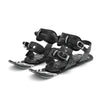
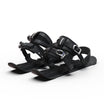
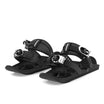

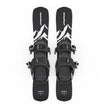
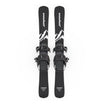

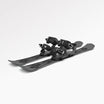
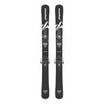

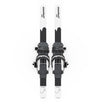





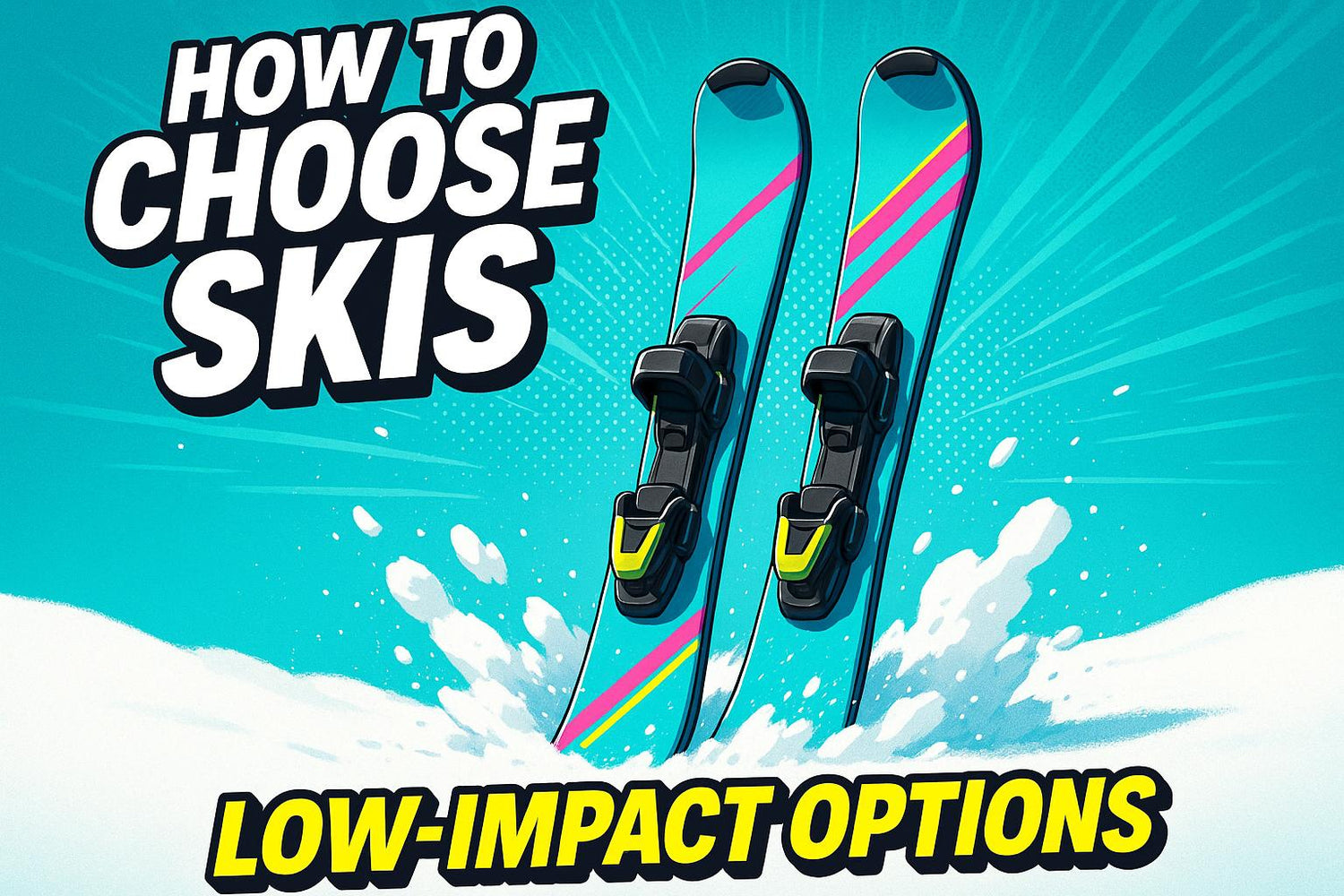
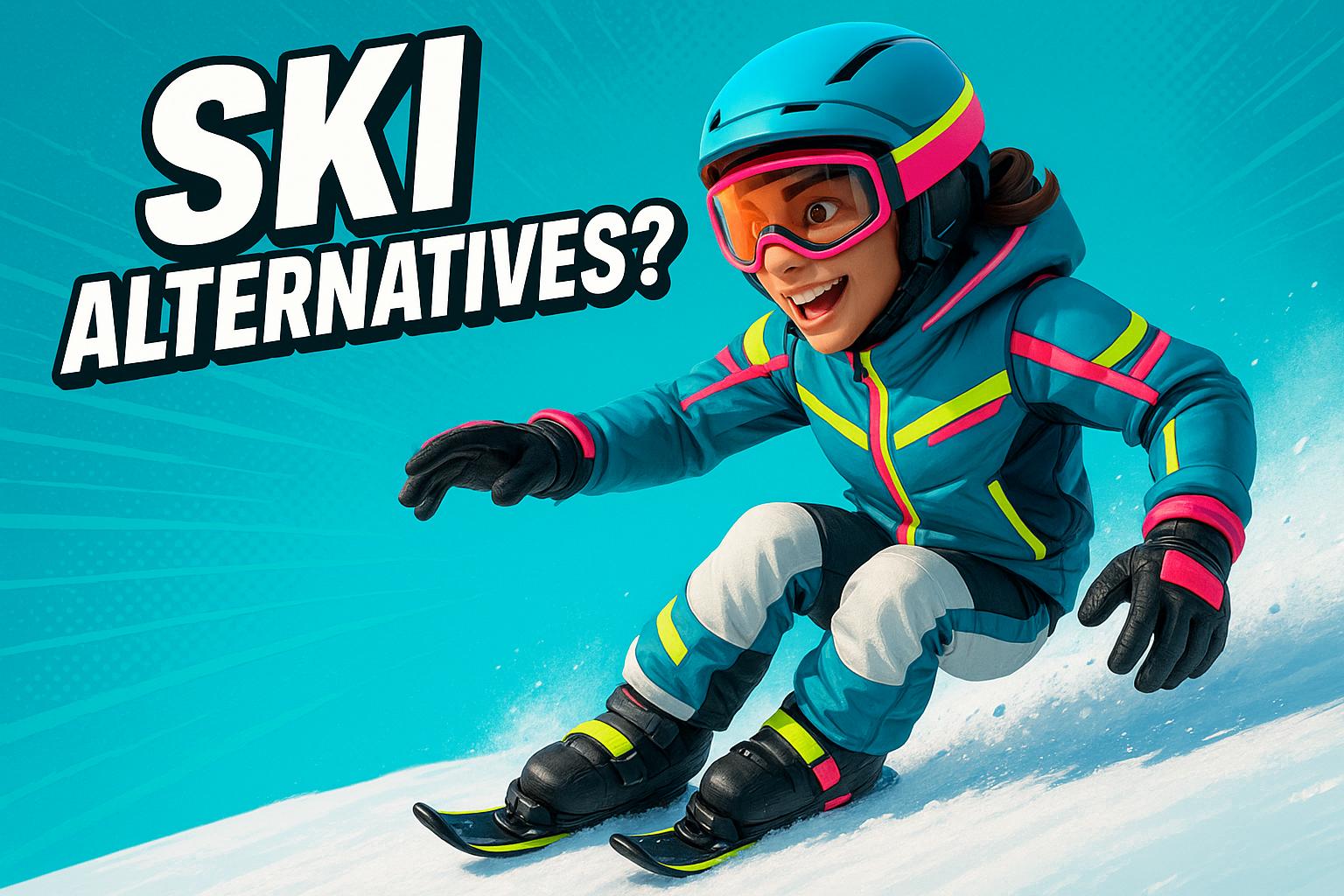
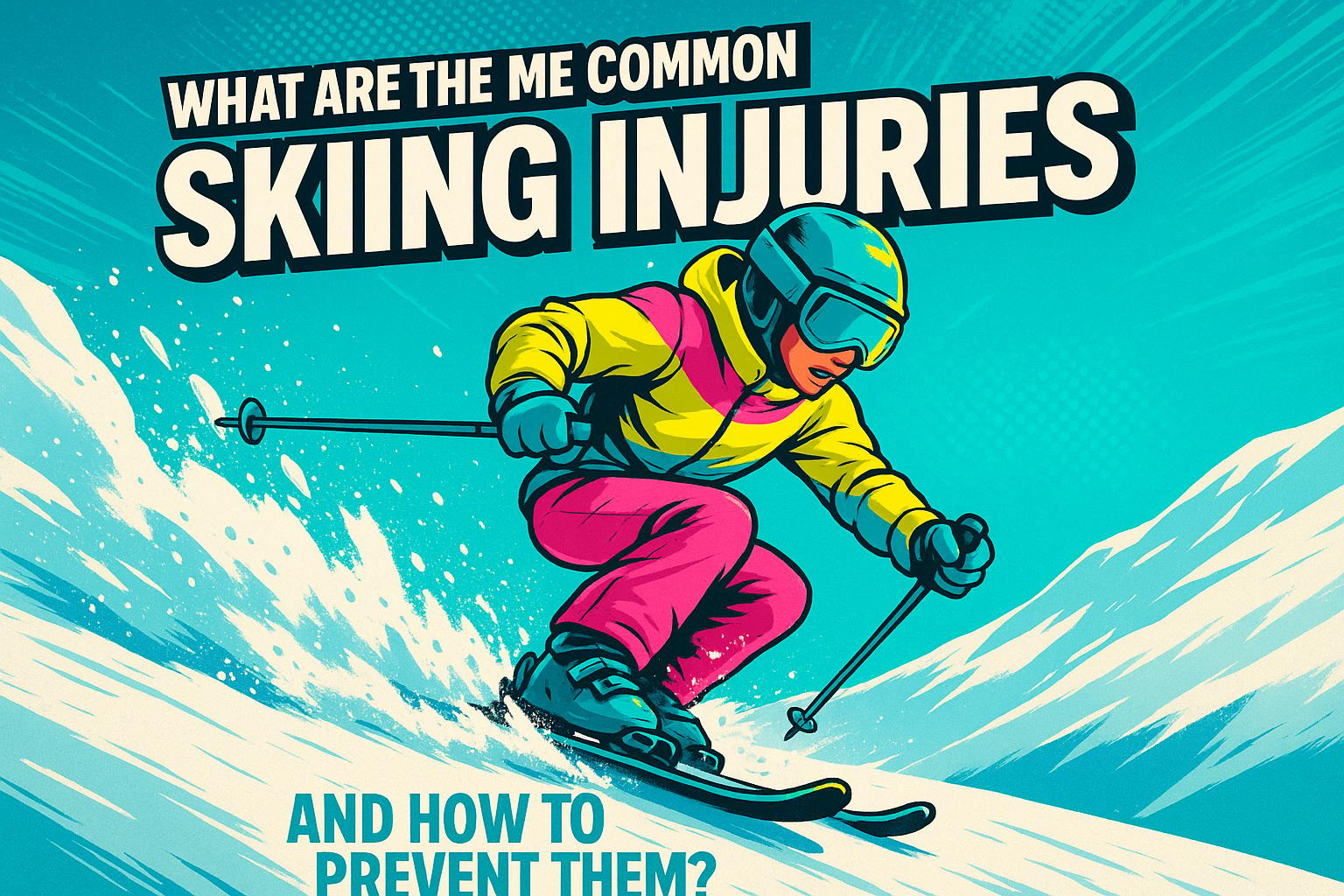
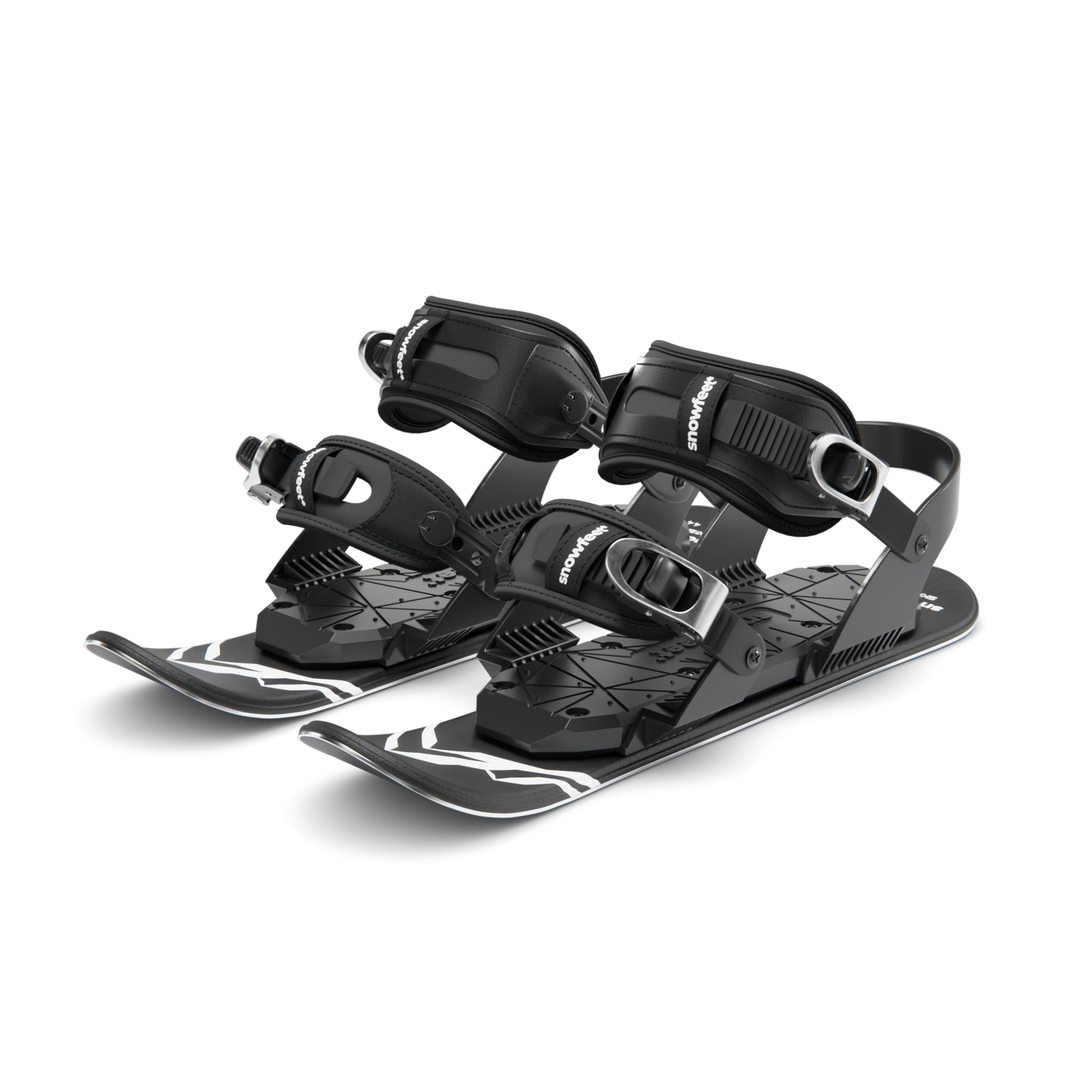

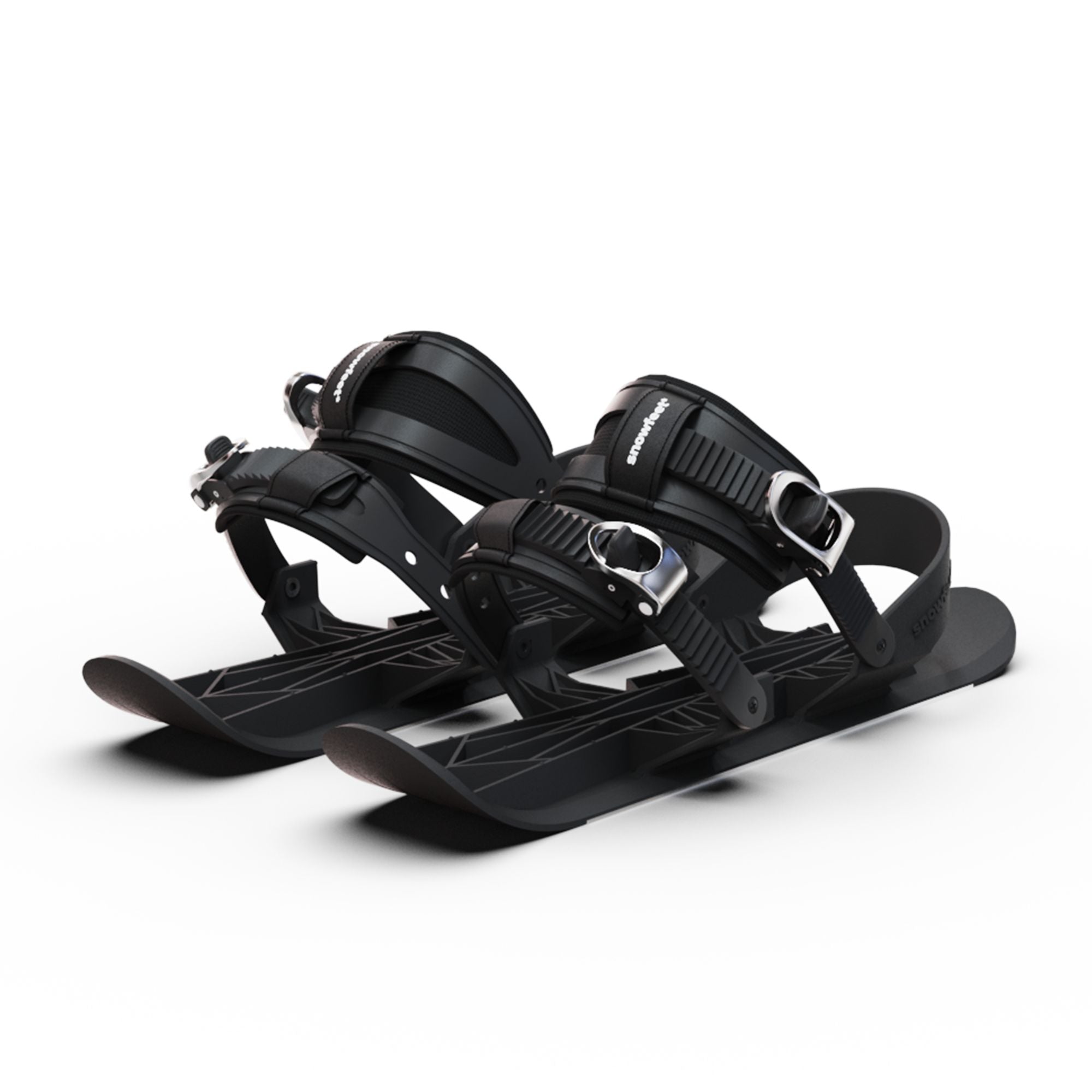
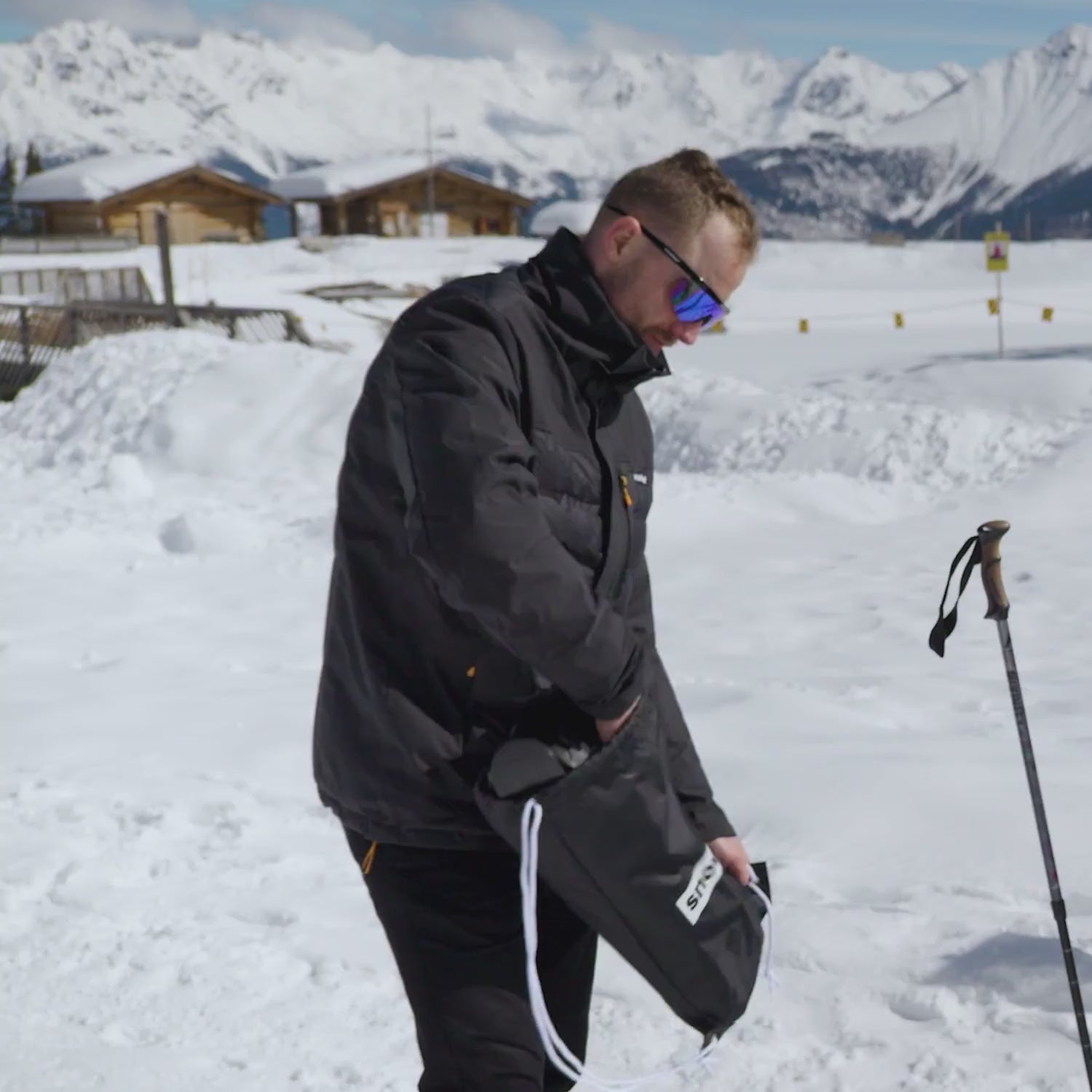
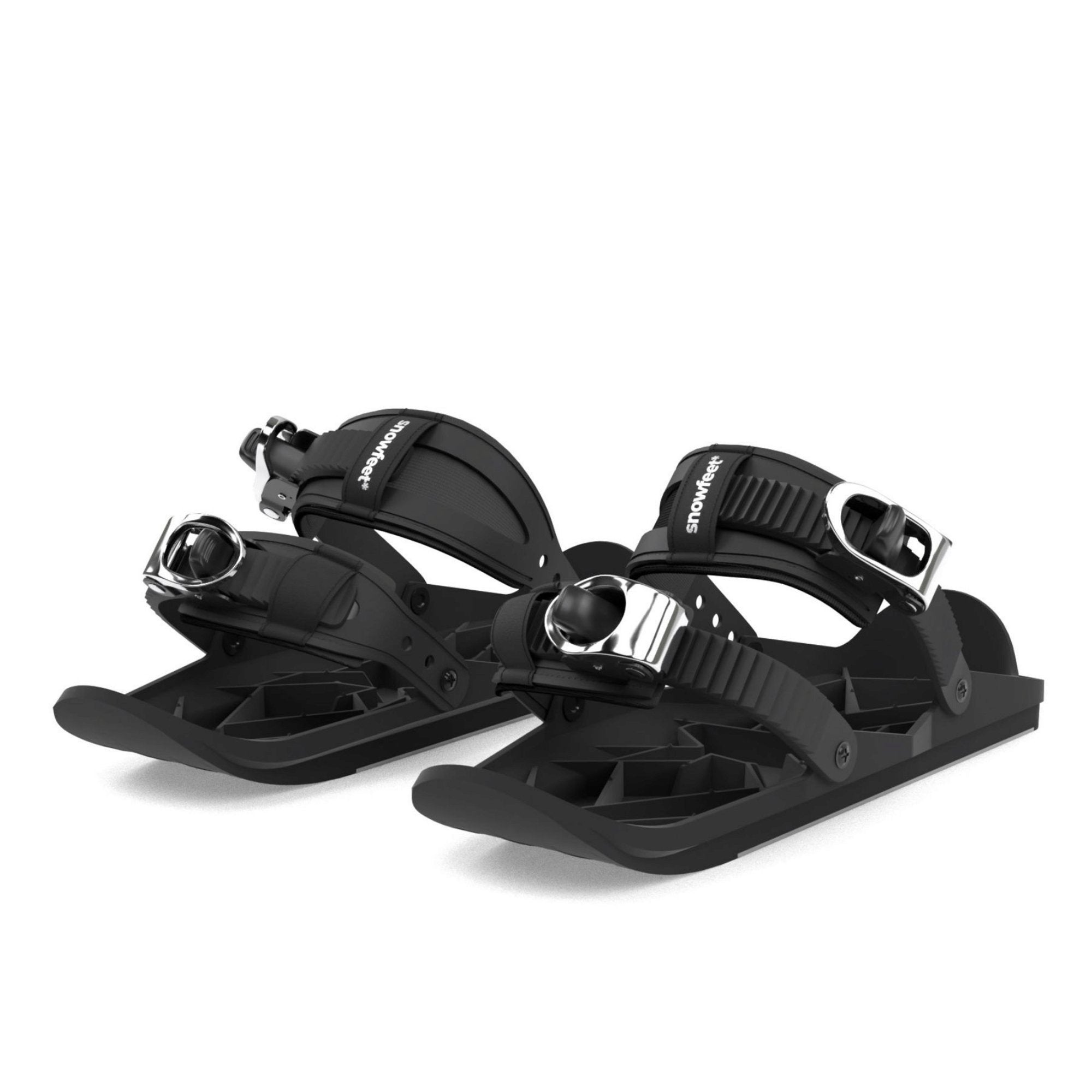
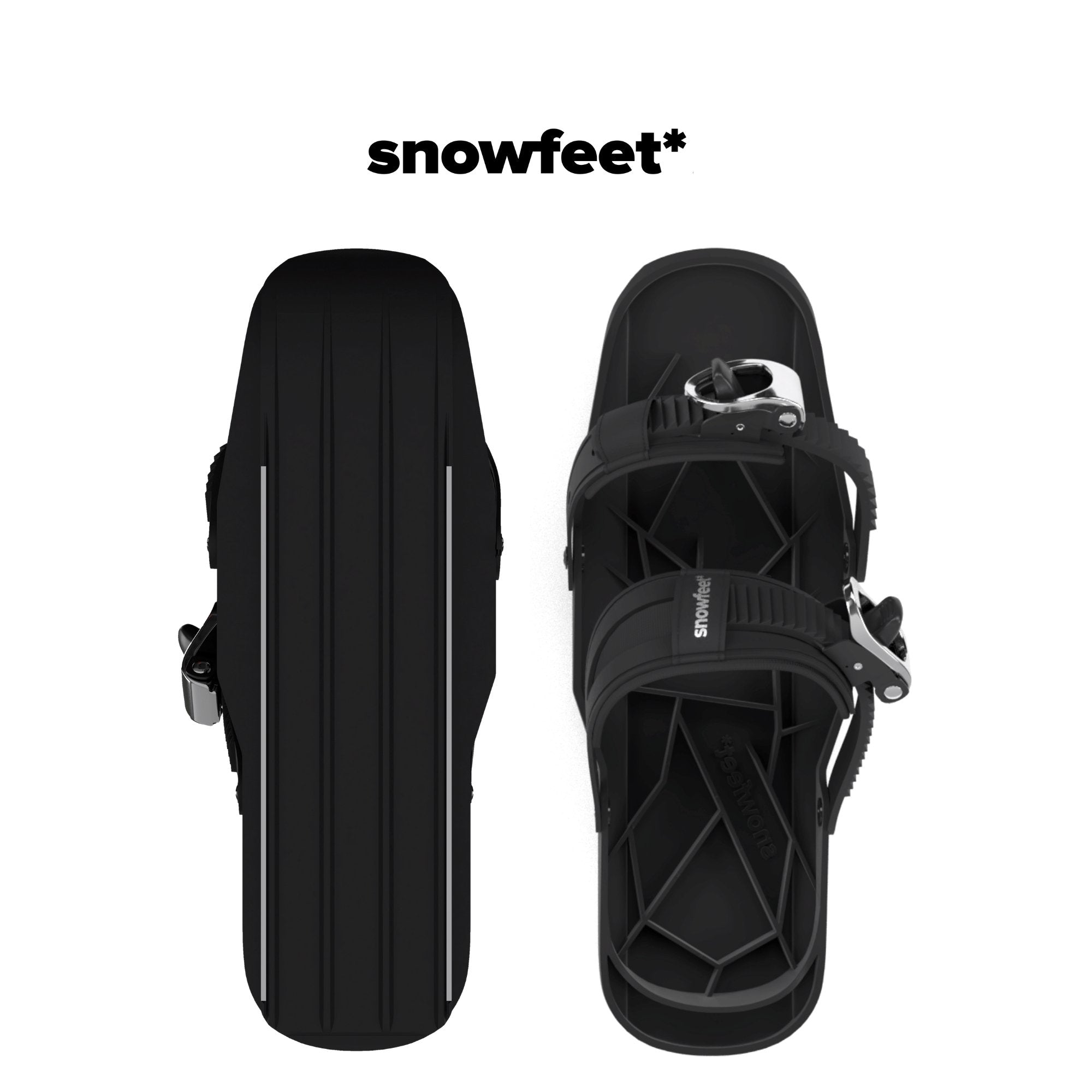
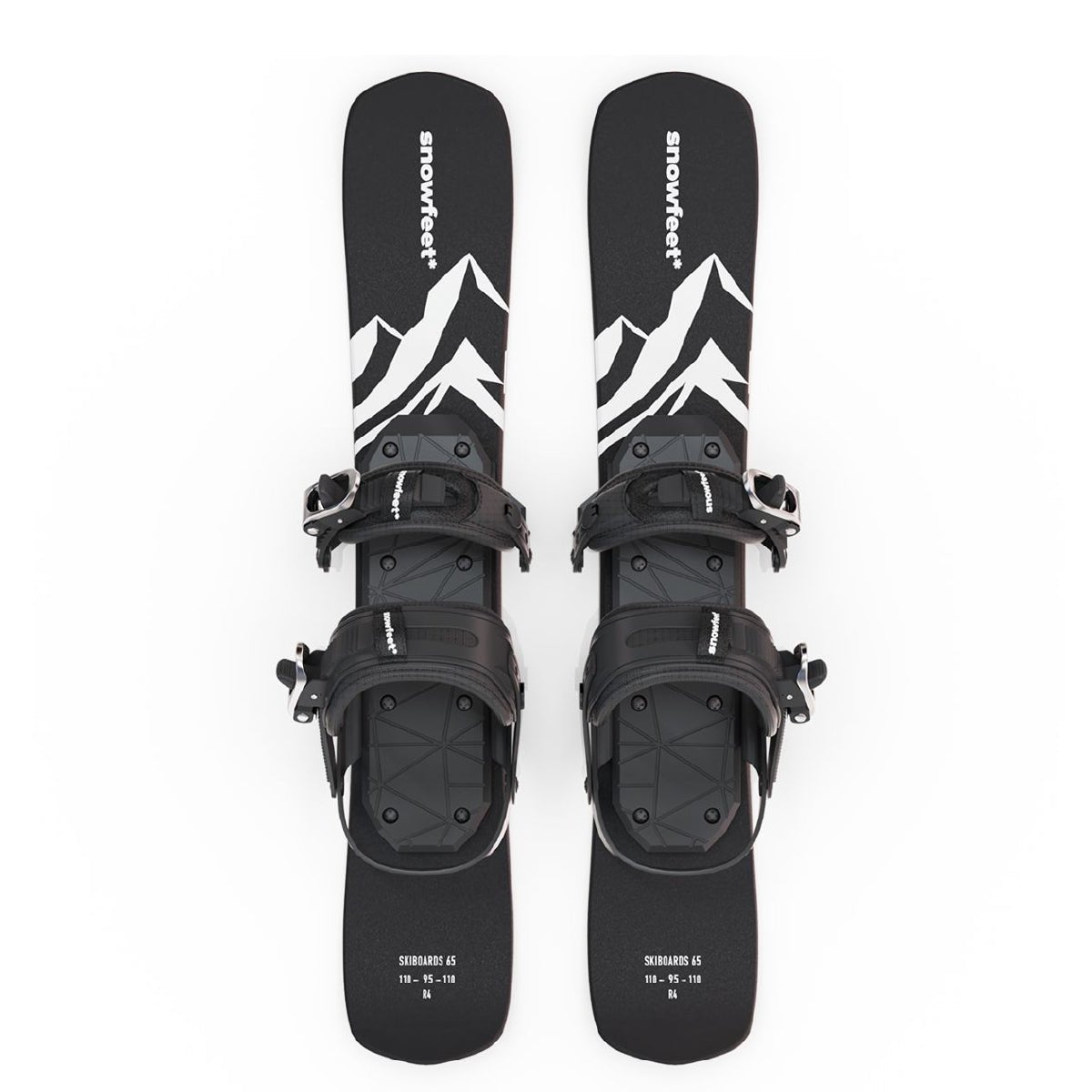
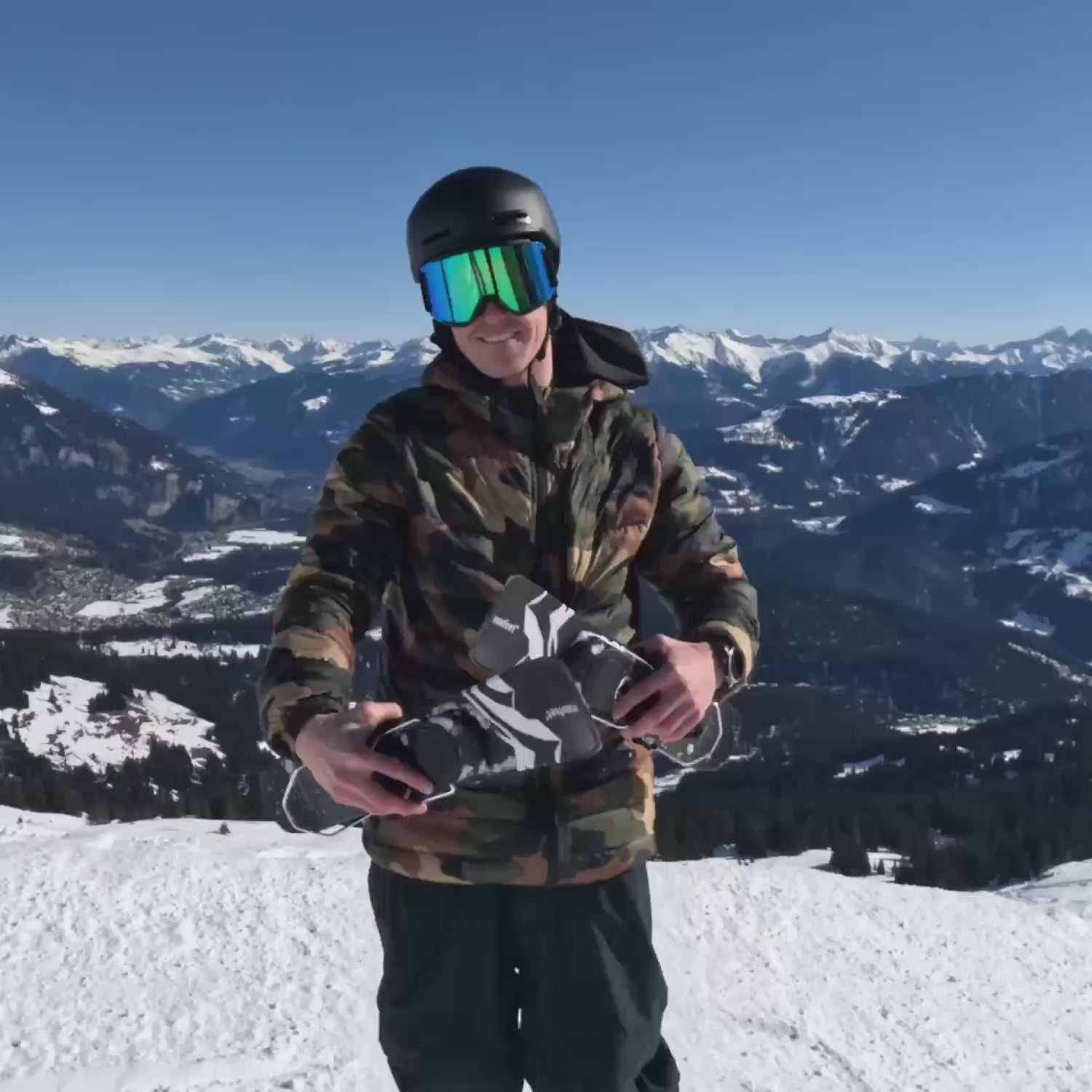
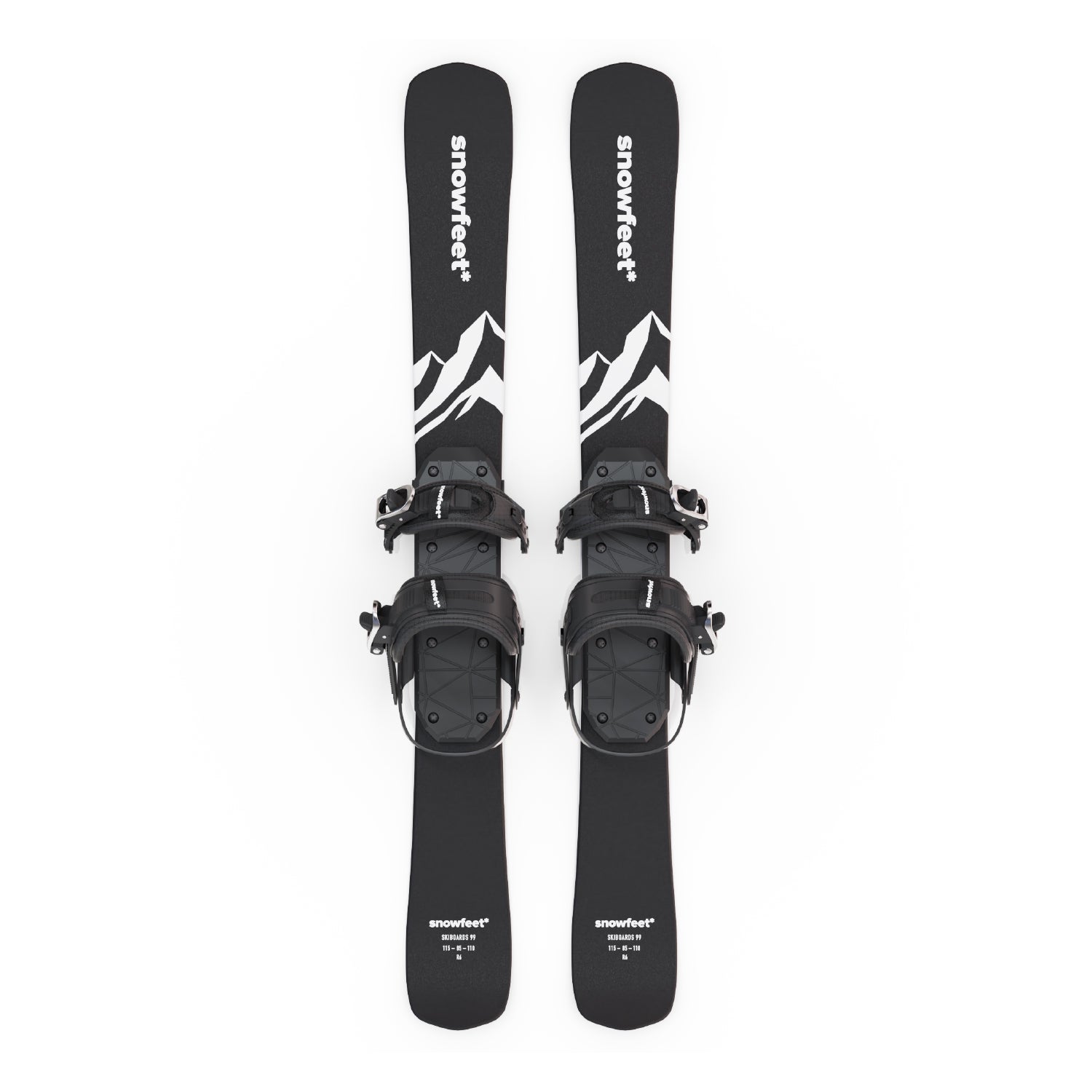
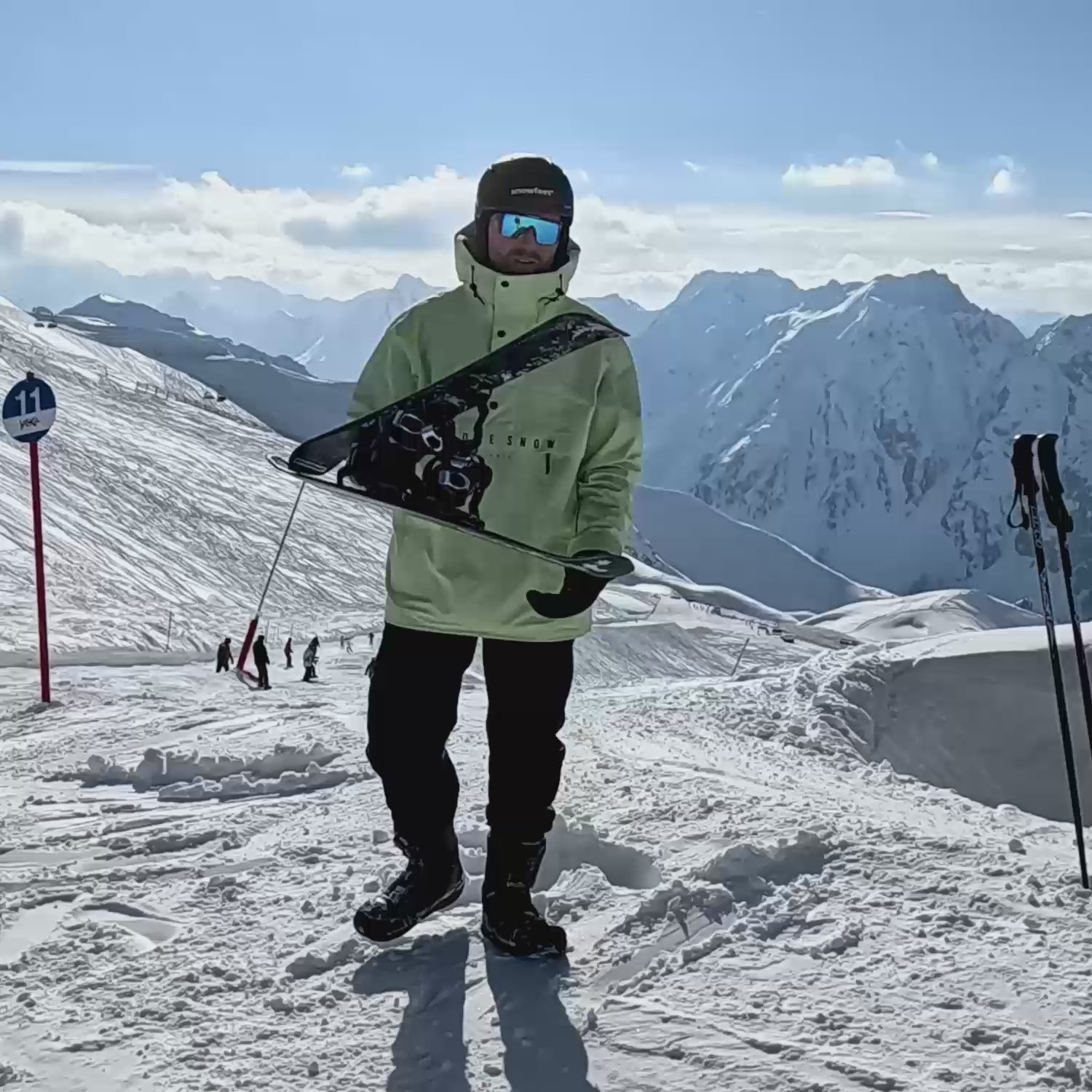
コメントを残す
このサイトはhCaptchaによって保護されており、hCaptchaプライバシーポリシーおよび利用規約が適用されます。